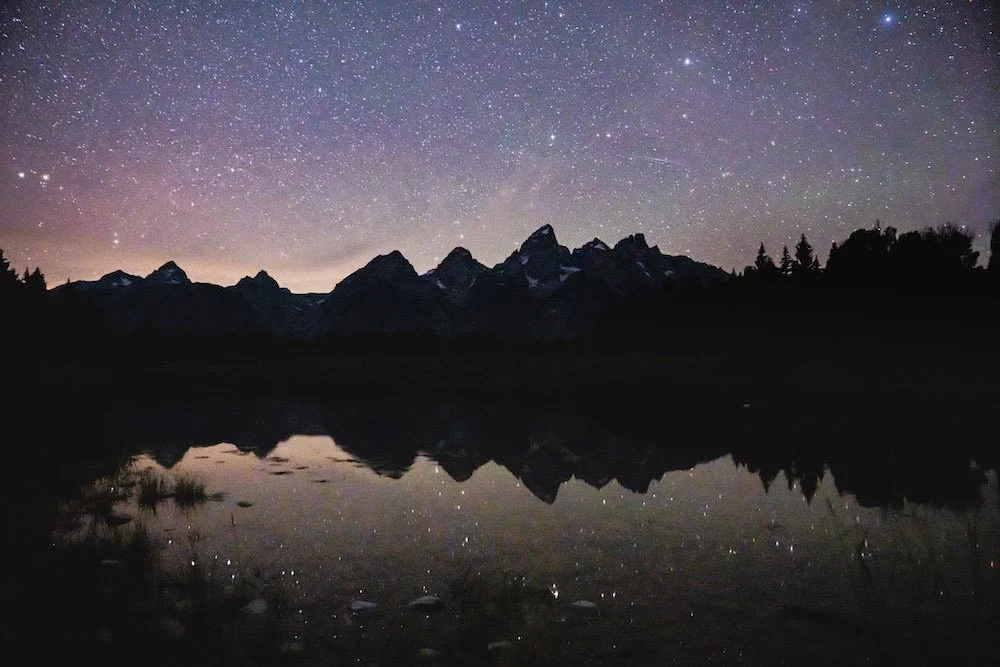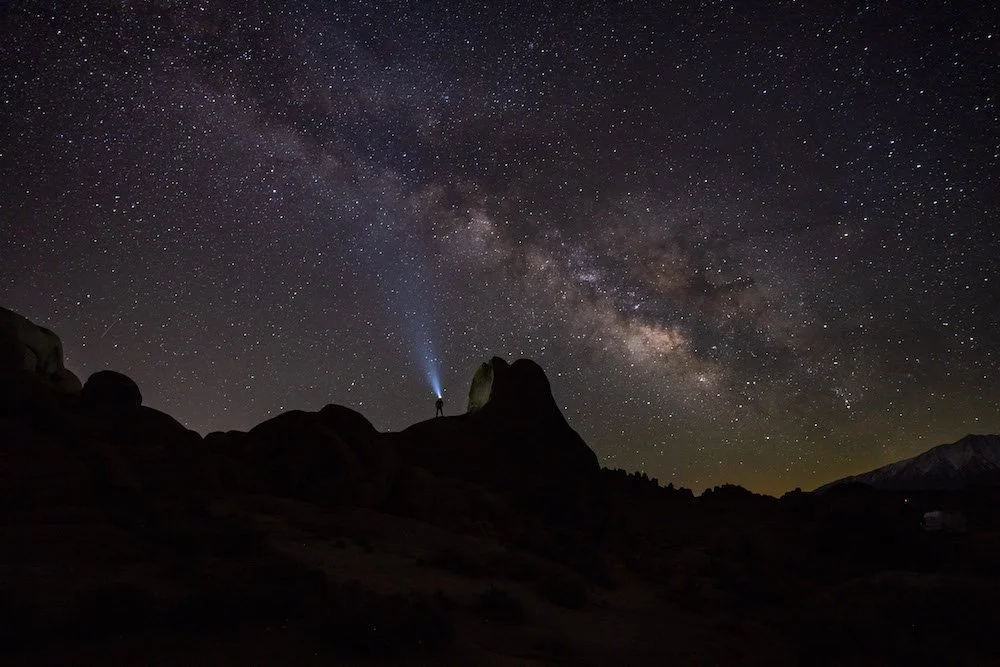The night sky has always held a profound fascination for humanity, inspiring awe and wonder for countless generations. Among the celestial wonders that grace our darkened skies, the Milky Way stands as an ethereal masterpiece—a river of stars stretching across the cosmos. Its shimmering beauty has captivated the imaginations of star lovers and astronomy enthusiasts alike, drawing them into a realm where the boundaries of the known universe seem to dissolve.
If you find yourself yearning to witness the breathtaking spectacle of the Milky Way firsthand, then you are in for a treat. In this article, we will embark on a celestial journey to explore the best places on Earth to witness the enchanting glow of our galaxy. From remote corners of the globe to protected dark sky sanctuaries, we will discover the locations that offer unparalleled views of the Milky Way, allowing you to immerse yourself in the grandeur of the cosmos.
Read on to discover the best places to see the Milky Way!
Pros
Reduction of Light Pollution: Dark sky designations promote the reduction of light pollution, preserving the natural darkness of the night sky. This benefits both human enjoyment of the stars and the ecosystems that rely on natural light cycles.
Stargazing and Astronomy: Dark sky designations provide optimal conditions for stargazing and astronomy. They offer unobstructed views of celestial objects, enabling enthusiasts and scientists to study and appreciate the wonders of the universe.
Ecological Benefits: By reducing artificial light at night, dark sky designations protect nocturnal wildlife, including birds, insects, and other animals that rely on darkness for foraging, reproduction, and migration. Preserving their natural habitat contributes to the overall ecological balance.
Energy Conservation: Proper lighting practices encouraged by dark sky designations result in reduced energy consumption. By eliminating excessive, misdirected, or unnecessary outdoor lighting, communities can save energy, reduce carbon footprints, and lower electricity costs.
Tourism and Economic Opportunities: Dark sky designations can attract visitors interested in stargazing and astronomy tourism. This can benefit local economies by boosting tourism, attracting researchers and astronomy-related businesses, and creating job opportunities.
Cons
Lighting Restrictions: Some individuals and businesses may perceive lighting regulations associated with dark sky designations as restrictive or burdensome. Compliance with lighting ordinances may require adjustments, investments, or changes in lighting fixtures.
Safety Concerns: In areas where lighting is limited or reduced, safety concerns may arise. Adequate lighting is essential for security, crime prevention, and general visibility at night. Balancing the need for safety with the goals of dark sky preservation can be challenging.
Limited Outdoor Activities: In areas with strict dark sky regulations, outdoor activities that rely on artificial lighting, such as nighttime sports events or certain recreational activities, may be limited or affected.
Public Awareness and Education: Educating the public about the importance of dark skies and the reasons behind the designations is crucial. Lack of awareness or understanding may lead to resistance or skepticism from local communities and businesses.
Potential Conflict with Development: Dark sky designations may face challenges when communities or businesses prioritize development or expansion that could compromise the preservation of dark skies. Balancing growth and conservation objectives can require careful planning and collaboration.
Best Places to see the night sky in the world!
Natural Bridges National Monument, Utah, USA: Designated as the first International Dark Sky Park, this location offers exceptional stargazing opportunities with limited light pollution.
NamibRand Nature Reserve, Namibia: Known for its pristine night skies, this reserve has stringent lighting regulations, making it an ideal spot for stargazing and astrophotography.
Aoraki Mackenzie International Dark Sky Reserve, New Zealand: Located in the South Island of New Zealand, this reserve offers breathtaking views of the night sky, including the Milky Way.
Atacama Desert, Chile: Renowned for its clear and dry atmosphere, the Atacama Desert provides unparalleled views of the stars and the Milky Way. The region is home to several observatories as well.
La Palma, Canary Islands, Spain: La Palma is recognized as a UNESCO Biosphere Reserve and a Starlight Reserve due to its commitment to preserving its pristine skies for astronomical observation.
Jasper National Park, Alberta, Canada: Situated in the Canadian Rockies, this national park boasts dark skies and stunning landscapes, making it an excellent destination for stargazing.
Isle of Sark, Channel Islands: With no street lights and limited vehicles, Sark offers an environment free from light pollution, allowing for excellent views of the night sky, including the Milky Way.
Mauna Kea, Hawaii, USA: Home to several world-class observatories, Mauna Kea's high altitude and minimal light pollution create ideal conditions for observing the Milky Way.
Related Read: Stargazing for Beginners, Everything You Need to Know to See the Milky Way
Did you know there is a Dark Sky Designation?
A dark sky designation refers to an official recognition given to a specific area, such as a park, reserve, or community, for its commitment to preserving and protecting the quality of its nighttime environment. These designations are typically granted by organizations like the International Dark-Sky Association (IDA) and signify that the designated area has taken measures to minimize light pollution and promote stargazing, astronomy, and the appreciation of the night sky.
The International Dark-Sky Association, in particular, offers various levels of dark sky designations:
International Dark Sky Parks: These are public and private lands that have implemented strict lighting regulations, educational programs, and conservation efforts to preserve the quality of their night skies. They provide exceptional opportunities for stargazing and public outreach.
International Dark Sky Reserves: These are large areas of public and/or private land that possess exceptional starry skies and nighttime environments. They usually encompass multiple communities committed to protecting the night sky through lighting controls and educational initiatives.
International Dark Sky Sanctuaries: These are the most pristine and remote locations, typically large natural areas or remote islands, that have exceptionally dark skies with little to no light pollution. They are dedicated to preserving their pristine night environments for scientific, educational, and cultural purposes.
International Dark Sky Communities: These are cities, towns, or municipalities that have made significant efforts to reduce light pollution, implement responsible lighting practices, and raise public awareness about the importance of dark skies.
Dark sky designations are important because they raise awareness about the impacts of light pollution, promote sustainable lighting practices, and provide opportunities for people to experience and appreciate the natural beauty of the night sky. They help protect the habitats of nocturnal animals, conserve energy, and foster scientific research and educational programs related to astronomy and dark skies.
10 Best Places to see the Milky Way in the United States:
Natural Bridges National Monument, Utah: This International Dark Sky Park offers stunning views of the Milky Way and has minimal light pollution.
Cherry Springs State Park, Pennsylvania: Located in a remote area, this state park is known as one of the best stargazing spots on the East Coast.
Big Bend National Park, Texas: With its vast open spaces and minimal light pollution, Big Bend offers remarkable views of the night sky.
Great Basin National Park, Nevada: This park's high elevation and remote location make it an ideal place for stargazing, and it is home to the annual Astronomy Festival.
Joshua Tree National Park, California: Known for its distinctive Joshua trees and dark skies, this park offers excellent stargazing opportunities near the southern California desert.
Death Valley National Park, California: With its dry climate and remote location, Death Valley is a great place for stargazing and astrophotography.
Sedona, Arizona: The city of Sedona has stringent lighting regulations to protect the night sky, making it a popular destination for stargazers.
Acadia National Park, Maine: This national park on the northeastern coast of the United States provides beautiful vistas and clear night skies for stargazing.
Denali National Park, Alaska: With its vast wilderness and minimal light pollution, Denali offers breathtaking views of the stars, especially during the aurora borealis season.
Flagstaff, Arizona: Known as the world's first International Dark Sky City, Flagstaff has strict lighting ordinances and is home to the Lowell Observatory.
What is light pollution, and how does it impact stargazing and the visibility of the Milky Way?
Light pollution refers to the excessive or misdirected artificial lighting that brightens the night sky and obscures natural darkness. It is caused by factors such as streetlights, buildings, advertising signs, and other sources of artificial illumination. Light pollution has a significant impact on stargazing and the visibility of the Milky Way.
Firstly, light pollution hinders our ability to see celestial objects clearly by creating a bright and scattered background glow in the night sky. This obscures faint stars, galaxies, and other deep-sky objects, making them difficult to observe or completely invisible. The excessive artificial lighting diminishes the contrast between the celestial objects and the night sky, reducing their visibility and limiting our understanding of the cosmos.
Secondly, light pollution affects the visibility of the Milky Way, our own galaxy. In areas with severe light pollution, the Milky Way often appears as a faint, washed-out band or is completely obscured from view. The natural beauty and awe-inspiring sight of the Milky Way arching across the sky, with its intricate dust lanes and countless stars, are lost to the pervasive glow of artificial lights.
Lastly, light pollution has an ecological impact on nocturnal wildlife and disrupts their natural behaviors. Many species rely on natural darkness for navigation, foraging, reproduction, and predator-prey interactions. Artificial lighting can disorient and confuse nocturnal animals, affecting their feeding patterns, migration routes, and overall ecosystem balance.
For those who have an affinity for the beauty of the night sky and the enchanting allure of the Milky Way, there are incredible destinations around the world that offer unforgettable stargazing experiences. By venturing to these dark sky havens, one can witness the mesmerizing dance of countless stars, trace the ethereal path of our galaxy, and forge a deeper connection with the vastness of the universe.
From the pristine deserts of Utah's Natural Bridges National Monument to the remote wilderness of NamibRand Nature Reserve in Namibia, these locations have been designated as sanctuaries of darkness, free from the encroachment of light pollution. Whether it's the volcanic landscapes of Hawaii's Mauna Kea or the idyllic tranquility of the Isle of Sark, each destination holds its own unique charm, providing an immersive experience that awakens the senses and invites contemplation.
However, let us not forget the importance of proper planning and consideration. Checking weather conditions, lunar phases, and adhering to any local regulations ensure the best chances of witnessing the Milky Way's awe-inspiring spectacle. Remember to bring along the appropriate equipment, such as cameras and lenses, to capture the magic and create lasting memories.
As we gaze upon the tapestry of stars that adorn the night sky, we are reminded of our small place in the grand cosmic symphony. So, whether you are an avid astrophotographer, an astronomy enthusiast, or simply captivated by the beauty of the universe, these best places to see the Milky Way beckon you to embark on an extraordinary journey of discovery, wonder, and appreciation for the vastness of the cosmos.








